Why Switching Risk Is a Common Objection in B2B SaaS (and How to Overcome It)
Last updated: July 20th, 2021

One of the biggest objections that B2B SaaS companies hear from potential customers is the issue of switching risk. Switching risk involves a number of significant concerns:
- Whether your software will improve the current performance of an existing tool it replaces.
- The time and effort required to learn a new tool and incorporate it into their business operations.
- The potential for your software not to work out, and the subsequent time and effort required to reimplement their old tool, or find yet another new tool to solve the problem.
This objection is especially true for newer B2B SaaS companies that embrace all-in-one positioning. Because this typically means you intend to replace not one, but several tools in their current tech stack — and this compounds switching risk even further.
Plus, decision makers within a company have to put their reputation on the line when they advocate to implement your solution. If the switch doesn’t work out, it’s on them.
To overcome this objection, there are three qualities you must prove you have to prospects:
- Durability: You can inspire confidence that your company will exist for years into the future.
- Security: You can show them you’re trustworthy with sensitive data.
- Stability: You can prove to them your software is reliable and experiences little downtime.
In this article, we’ll walk you through how to prove your competence in all three areas. We’ll also cover:
- How strategic positioning can help you overcome this objection in the first place.
- Examples of companies that do and don’t position themselves well against switching risk.
- 4 ways you can effectively reduce switching risk objections through your website.
Not sure how to position your B2B SaaS Company as a viable alternative to competitors in your market? Schedule a Free SaaS Scale Session with us to learn how we can help.
If you prefer to listen to this article, you can check it out on our podcast, SaaS Marketing Bites or listen here:
Why positioning matters when it comes to overcoming switching risks
The tools that have the biggest trouble overcoming switching risk are usually business critical software. These are platforms such as CRMs, marketing automation, and team communication software.
Business critical tools like these often settle for positioning themselves as all-in-one solutions. Though it might seem beneficial on the surface, all-in-one positioning often ends up handicapping rather than helping you in the long run.
The reason this happens is because all-in-one software proposes to handle many functions of a business. That raises questions from a variety of different stakeholders who will want to know if your product is durable, secure, and stable.
Why do these qualities matter?
Because those stakeholders won’t want to invest money, time, and effort in a software that can’t prove it’ll still be in business in the next 18 months. They will also be skeptical if it can’t explain how their data will be protected. And finally, they won’t want to switch to a brand new software that can’t guarantee uptime 99.7% of the time.
To illustrate this point, let’s look at a company that is vaguely differentiating itself from the rest of its competitors.
The implications of vague positioning
Slite is a tool that enables internal team communications for companies. They promote themselves as ideal for teams trying to share ideas, save knowledge, and work together remotely.
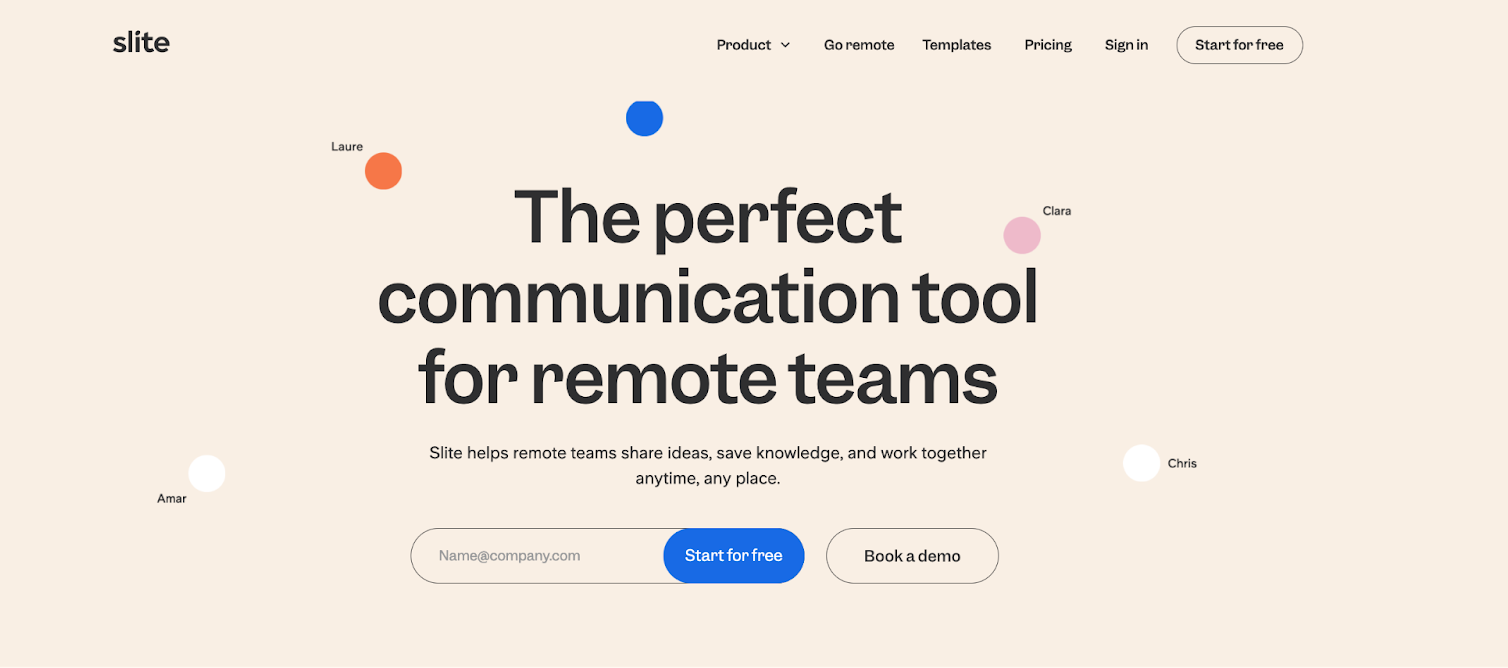
This value proposition isn’t enough to make them stand out from competitors such as Slack. Relative to their competitors, these are the problems that Slite faces with its lack of proper positioning:
- There’s nothing in the way that Slite positions itself that answers specifically who they’re for. Sure, they say there for remote teams, but every digital tool today is designed with remote work capacity.
- There’s nothing on their website that addresses how someone would transition existing workflows over to their software.
- There’s not much reassurance about how they guarantee communications will always be online (something that Slack guarantees).
- They state that they’re free. But being free isn’t enough of an incentive to motivate someone to switch from a competitor like Slack, which is also free.
- They don’t do much to reassure prospects that there is benefit and safety in making such a huge switch.
Now, because they aren’t a client of ours, we can’t say for certain if this company is suffering due to their positioning.
But they are an example of a company that hasn’t distinguished themselves from the clear winners in their category.
In a market with huge incumbents, Slite will have trouble growing long-term without a meaningfully differentiated product.
To nail your positioning, get specific
The more effective approach for business critical software is to narrow their positioning based on a specific problem they solve.
Position yourself less as a tool that can impact an entire company and there will be fewer stakeholders involved in the decision-making process.
In doing so, you can overcome the objection of switching risk because you’re only asking a company to commit time and effort to integrate a new tool that addresses a single challenge as opposed to many.
One company that does this well is Intercom.
As a B2B SaaS product that has a broad set of features, they could position themselves to solve many different problems. If they did, that would heighten the issue of switching risk for prospects considering their service.
But notice what Intercom does as soon as you land on their homepage. Rather than focusing on being a tool that does many things, they’ve positioned themselves around solving the lone problem of customer communication.
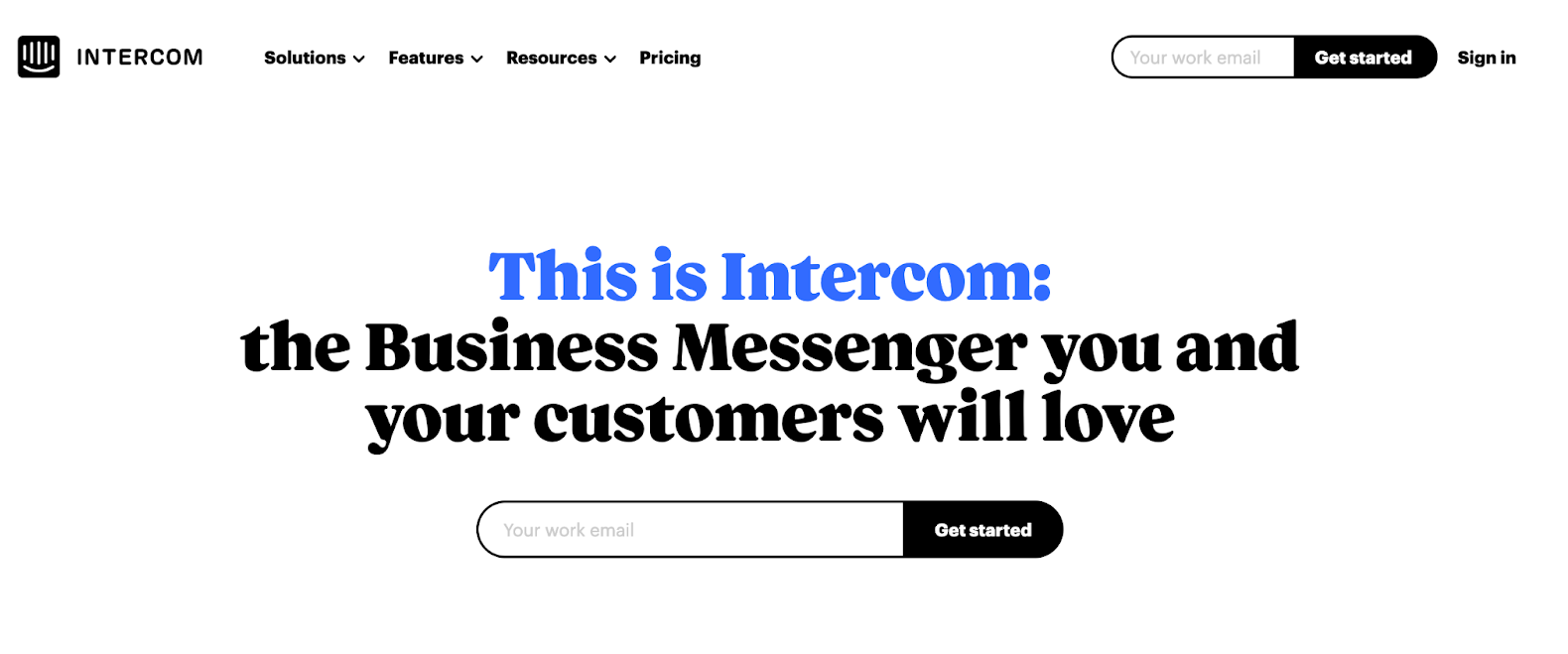
Their tagline: “The business messenger you and your customers will love.”
It’s one problem solved by a single solution.
Intercom is able to overcome reservations around switching risk because they prioritize selling their live chat functionality first.
Once they’ve converted prospects into customers, only then will they focus on selling decision-makers on the rest of their features through product marketing.
This is what’s called a land and expand approach — upselling after they’ve solved an ideal buyer’s most pressing pain point first.
Note: Want to learn more about how to create your own pain point positioning? Check out our post on the problem with all-in-one positioning (and what you can do instead).
4 ways to refine positioning on your website to overcome switching risk
Once you nail your positioning, it’s a matter of communicating it effectively on your website. The following key areas provide opportunity to show differentiation:
- Social proof
- Pricing
- Competitor comparison landing pages
- Why us/origin story
Each of these pages and website elements can help you communicate your positioning to website traffic from organic search or PPC. And they can also be used as sales enablement resources to overcome objections of switching risk from prospects.
Let’s break down each area, one-by-one, starting with social proof.
1. Social proof
Social proof can work in the battle to overcome switching risk. Signaling your credibility on your website helps you establish yourself as a trustworthy partner to prospects.
Adding social proof doesn’t have to be hard. If you’re a funded company, one simple way is to share when you’ve raised new capital.
Whether you’ve secured millions of dollars in private equity or venture funding, tell your website visitors about it. Plastering a banner announcement of this event on your website will address any questions prospects might have about the durability of your company.
Another easy approach is to showcase badges of any certifications that your company has. If you’re dealing with customers in the European Union, include a badge that you’re GDPR compliant. If you’re having to comply with medical record handling legislation, you might want to think about including the HIPAA Certified badge.

SmartSurvey is a survey tool primarily used by public sector organizations in the UK — they have to comply with a lot of security protocols. They dedicate a whole section to it on their homepage.
These are small moves that can make a big impression on prospects. By including badges about where and how you store data, visitors can trust that your operation is both stable and secure.
Getting targeted testimonials using the bullseye method
Another way to add social proof is to share testimonials.
Most companies get testimonials by asking existing customers to provide thoughts on their service. But this is often ineffective since customers won’t usually give you the stories you need.
Instead, you can use an approach we call the bullseye method. You simply ask customers for testimonials that your prospects need to hear.
In the case of switching risk, this means asking questions to your current customers that lead them to discuss the durability, security, and stability of your service.
We used this method to help one of our clients, Truffle POS, collect effective testimonials. Truffle POS is a point of sale software that enables restaurants to create online ordering and delivery systems.
Using the bullseye method, we encouraged them to speak to customers from three different verticals of restaurants:
- Full service
- Franchise
- Quick-serve
Based on the conversations they had with users in each vertical, they wrote testimonials that detailed the reliability of their POS software to streamline operations. Then, they had what they wrote approved by their customers.
2. Pricing
Pricing isn’t the only factor that influences a company’s decision to buy your service. But it often influences decision-makers at B2B SaaS companies to decide to switch.
One way to differentiate your pricing is through pricing structure. To explain, let’s look at an example of a company that does this well.
ShipBob provides picking, packaging, and processing services for eCommerce stores. In a nutshell, they’ll handle the shipping and fulfillment of physical products.
One of the biggest challenges that eCommerce companies face is forecasting growth.
That’s because most of ShipBob’s competitors aren’t transparent about shipping costs and instead set complicated pricing that include hidden fees. Knowing this, ShipBob meaningfully differentiates itself by being upfront about their price.
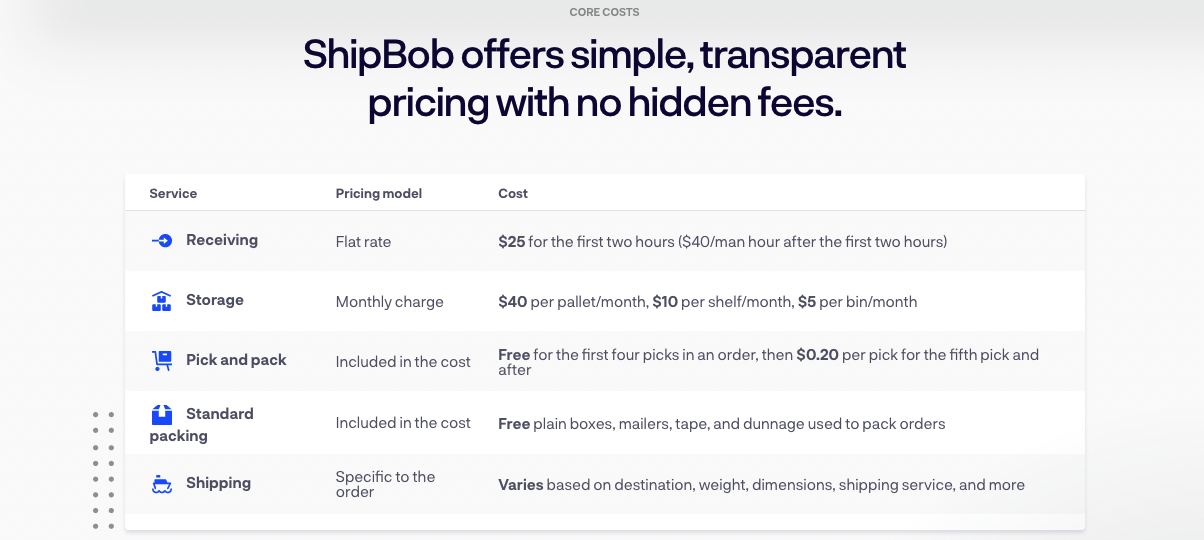
ShipBob doesn’t stop there. They use the remaining real estate on their pricing page to separate themselves by explaining what they can deliver relative to their competition.
For example, they emphasize built-in support with a customer success representative, which is an uncommon feature among similar services.
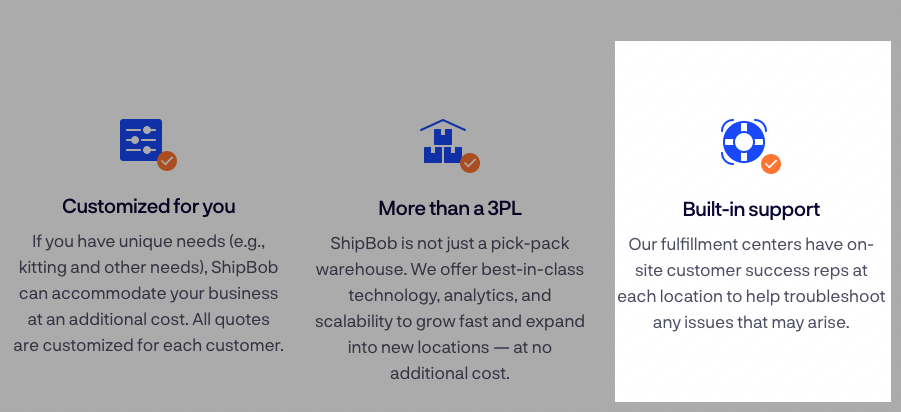
They also reassure prospects of their credibility by including testimonials featuring pictures of the users who said them.
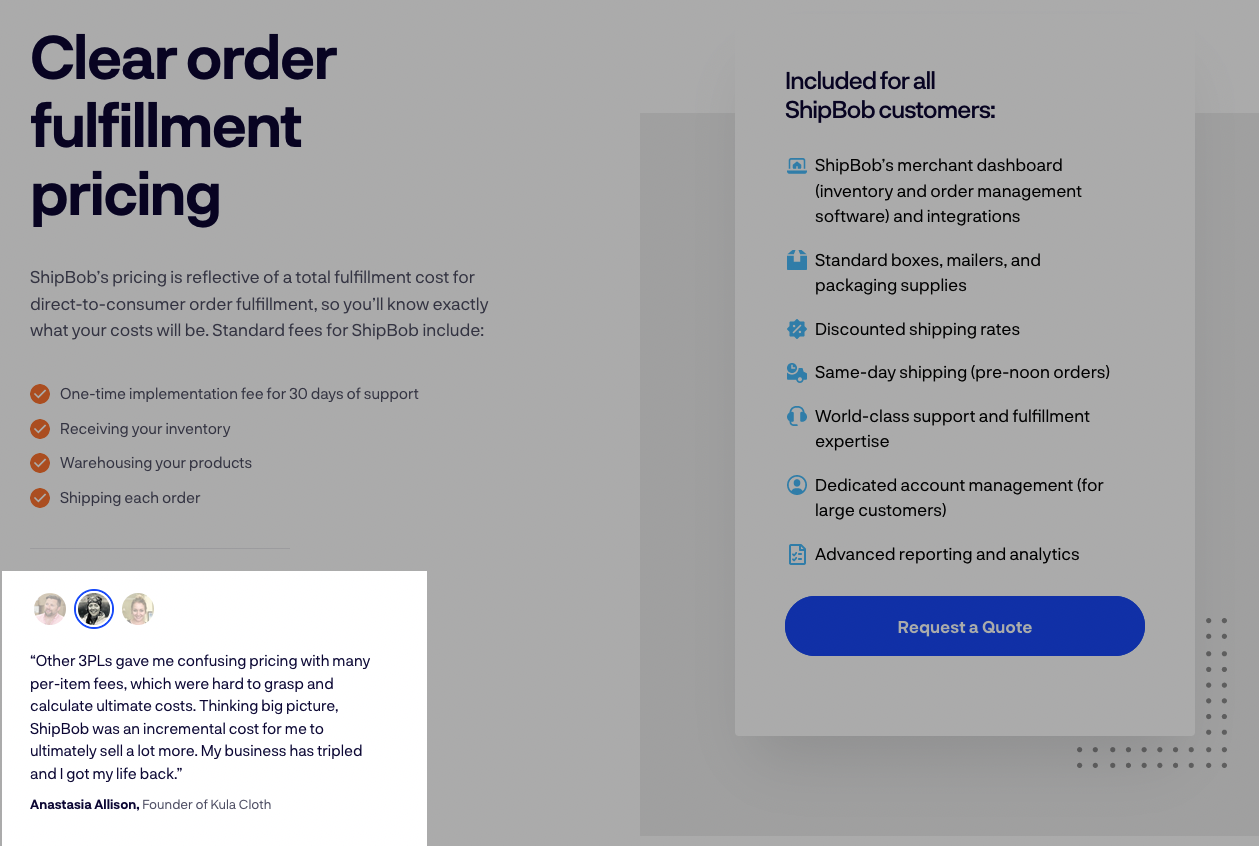
This provides clear points of differentiation to help people build a case for making the switch to their service. When prospects bring up these points to other company stakeholders, they come armed with compelling reasons of why Shipbob is a better alternative — and more easily overcome objections internally that relate to switching risk.
3. Competitor comparison landing pages
Another effective website element for overcoming switching risk is creating landing pages that compare and contrast you and your biggest competitors.
We’ve written at length about how to create effective comparison pages. For the full deep dive on the topic, check out this past post.
One strategy that’s particularly useful for addressing switching risk through these pages is to interview recent customers who decided to switch to your service. Listen to them explain in their own words why they chose you over their previous software. And include those points on your page.
For example, when our client BoardOnTrack asked their customers this question, they found that their CEO evaluation feature was something their customers loved (and their competitor lacked). So they included this on their comparison page in a testimonial:

By including specific points about why customers have been happy they made the switch, you can help reduce switching risk with new prospects, and further reinforce why your product is worth the switch.
4. Why us/origin story
Finally, the last place on your website you can leverage to overcome switching risk is “why us” content. A good “why us” explanation communicates a company’s ethos.
There isn’t a shortage of SaaS companies out there who obsess with communicating the quantitative measures of what they can do for prospects. In addition to focusing on that, it’s useful to communicate about what drives meaning in your business.
Your why us/about us page should help prospects understand your organization’s culture, commitments to social responsibility, and your long-term mission. Using your why us page to expand on these topics can calm doubts or questions they might have about your durability.
One company that does this well is one of our clients, CartHook. When you visit their about us page, CartHook makes clear their vision for why they exist to anyone visiting. In fact, one of the first things you’ll notice is an affirmation in their belief that eCommerce is the future of global retail.
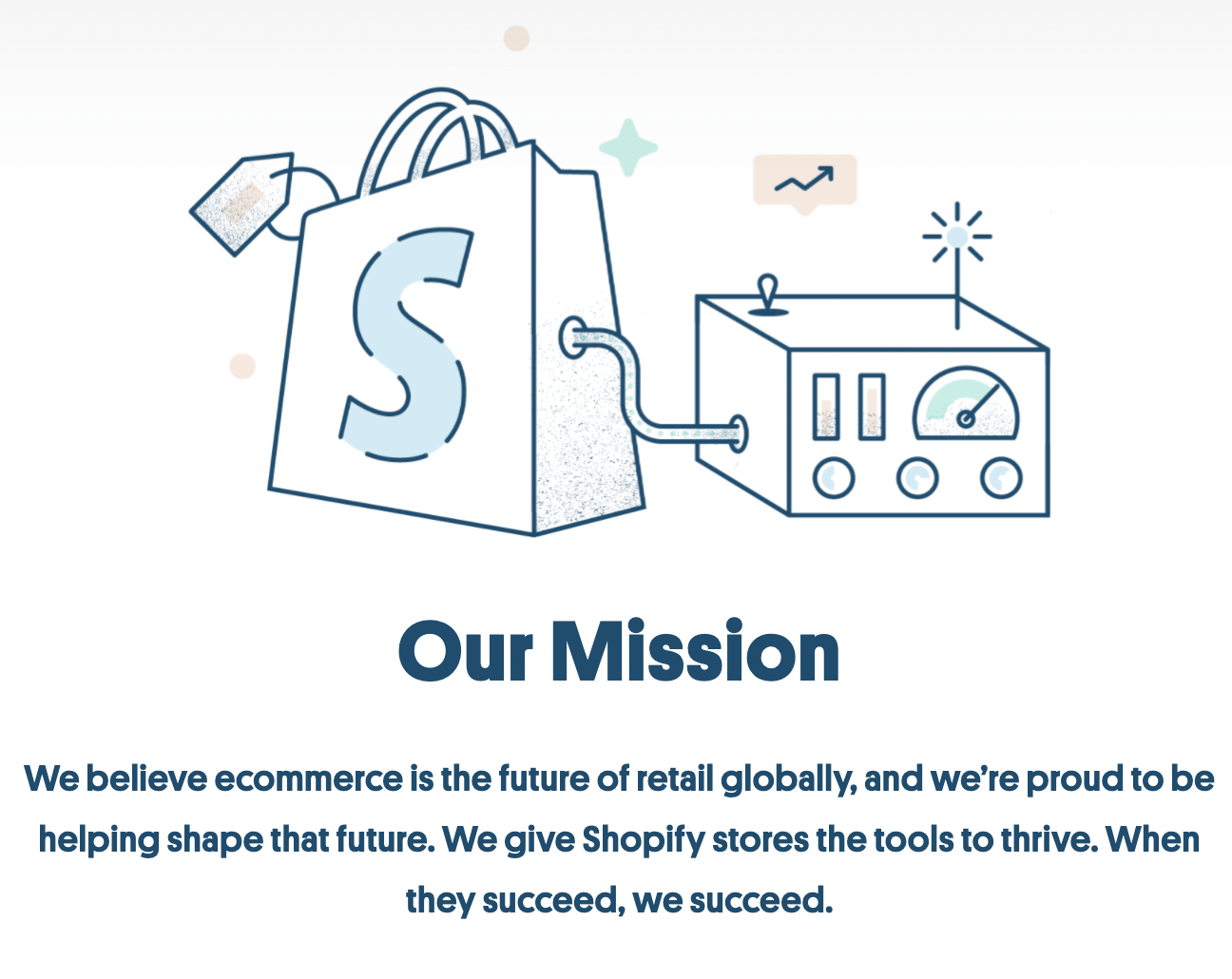
They also make a point to illustrate four core values of how they operate as a business. Simple, but effective enough to convey that their business committed to serving its industry long-term.
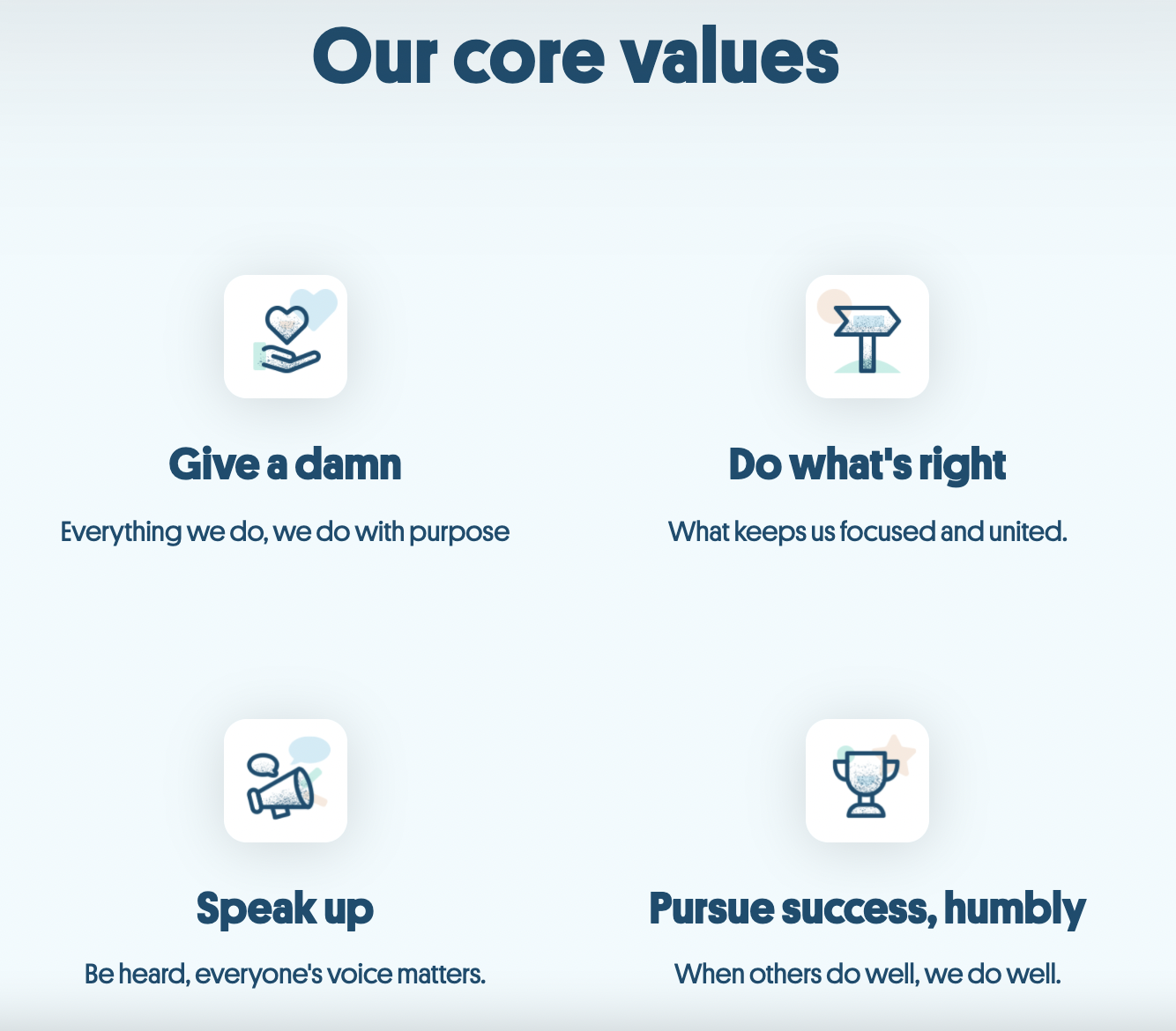
To sum it up
If you’re a young company or selling a business critical tool, you’ll face resistance from prospects due to the obstacle of switching risk. To overcome it, you need to craft a compelling case for why your product won’t endanger your prospects’ existing systems and workflows.
Addressing switching risk boils down to having the right positioning. Narrow your positioning to focus on answering questions about specific pain points that you know your customers experience.
To overcome switching risk, you also need to prove to your target market that you own the following three qualities:
- Durability: Demonstrate that you have means and resources to stay in business long-term
- Security: Explain the how behind your data handling practices
- Stability: Show proof that your software suffers little from unexpected outages
When you can communicate that the downside of switching to you is minor in these areas, you’ll encounter fewer objections from potential prospects.
Not sure how to position your B2B SaaS Company as a viable alternative to competitors in your market? Schedule a Free SaaS Scale Session with us to learn how we can help.
What you should do now
Whenever you’re ready…here are 4 ways we can help you grow your B2B software or technology business:
- Claim your Free Marketing Plan. If you’d like to work with us to turn your website into your best demo and trial acquisition platform, claim your FREE Marketing Plan. One of our growth experts will understand your current demand generation situation, and then suggest practical digital marketing strategies to hit your pipeline targets with certainty and predictability.
- If you’d like to learn the exact demand strategies we use for free, go to our blog or visit our resources section, where you can download guides, calculators, and templates we use for our most successful clients.
- If you’d like to work with other experts on our team or learn why we have off the charts team member satisfaction score, then see our Careers page.
- If you know another marketer who’d enjoy reading this page, share it with them via email, Linkedin, Twitter, or Facebook.